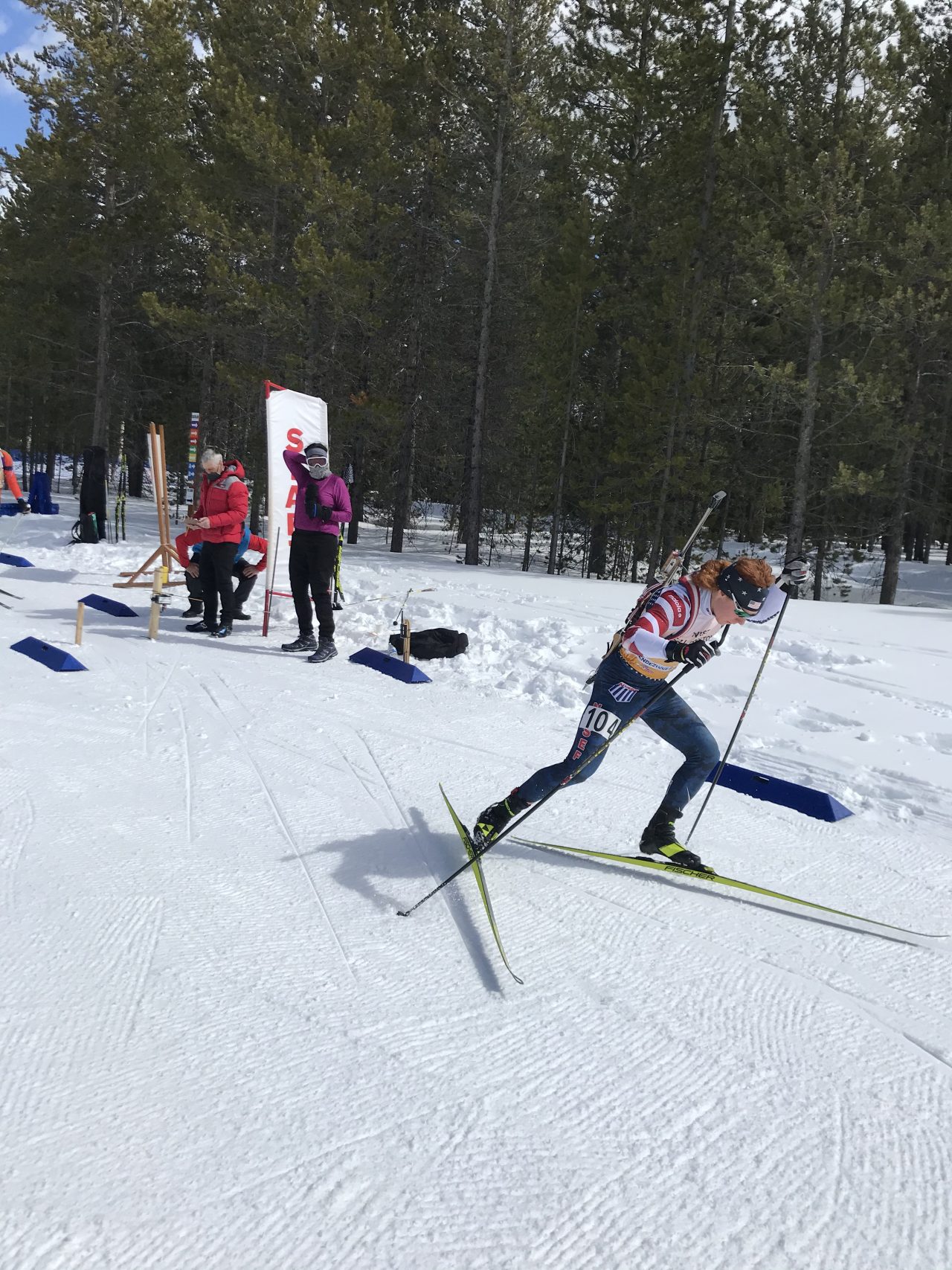
There will be many ways in which we remember the past 12 months— March to March — as a relative void when it comes to normalcy. You don’t need to hear that from us. For the most part, this was a year with a lack of national championships at the senior or junior level. U.S. Ski & Snowboard made the decision early on to cancel Senior Nationals and Junior Nationals. The same was true for Canada. Up north, formal racing at the elite level, for both cross-country and biathlon — was tabled as a Covid-19 precaution. The Canadians did hold a modified Frozen Thunder in Canmore — yet contact tracing after the event linked numerous cases to staff and/or athletes that had traveled to Alberta from the eastern part of Canada.
In late March, West Yellowstone became the GPS pin-drop for domestic biathlon normalcy. Able to piggyback on safety procedures already in use by the International Biathlon Union and International Ski Federation since late November, US Biathlon and the local organizing committee in West Yellowstone laid out a plan that, in practice, minimized personal exposure. Between March 26-28, a packed schedule of racing included junior, senior, and IPC athletes. According to Chief of Competition, Marc Sheppard, 140 athletes registered for the series.

Gallatin County, in which West Yellowstone presides, is large. Bozeman is the county seat and is 90 miles away from West Yellowstone by car. On March 23, the county counted 42 new cases of Covid-19. On March 28, 28 new cases were registered. The closest ICU beds are available in Bozeman. On March 19, healtygallatin.org reported 35% of critical care beds as open, with an additional 49% of non-critical care beds open between the two main health care facilities in Bozeman. (Hospital bed occupancy is one method to gauge the severity of community spread.) And according to The World Health Organization positivity rates from testing should be below 5% to consider re-opening businesses. On March 16th, the seven day rolling average for percent-positive tests in Gallatin County was 4.6%.
Further, West Yellowstone’s portal to Yellowstone National Park was closed to car traffic at the time of the events. The influx of visitors associated with the town was at a seasonal lull.
“We had fairly strict Covid-19 protocols in the stadium and range (including changing the access and egress to the stadium to limit congestion and face to face encounters) and USBA also mandated a negative Covid-19 test within 72 hours of the first competition for all athletes and coaches,” Sheppard emailed.
Eileen Carey, director of U.S. Paralympics Nordic Skiing, found the race organization both safe and efficient for her team. “USBA and WYSEF did a great job organizing and implementing the event,” Carey wrote in an email. “COVID protocols were really clear and well researched. The race crew in West Yellowstone is always so keyed into providing a great event for athletes and they were committed to the protocols so the experience for athletes and teams could be top notch. Testing, daily symptom checks, cleaning processes, and mask protocols were all instituted and from what I saw everyone was on board to do their part.”

Most often, biathlon nationals for able bodied and para athletes are not co-mingled. This year, according to Carey, offered an opportunity for all athletes to race at the same event.
“It is the first time we have integrated in my time with the Team at least,” explained Carey. “West Yellowstone has always been a great supporter of para athletes. They have integrated athletes into other events, both cross-country and biathlon for several years. When I saw that they were hosting USBA Nationals (initially scheduled for last year), I worked with Marc Sheppard to add a para division to the event. When the event was moved to this March, there were some extra scheduling challenges due to COVID protocols, but Marc and his crew made it happen and put on a great event for all athletes. We hope this can be the start of a tradition!”
You can find full results from the three days of racing here.
Jason Albert
Jason lives in Bend, Ore., and can often be seen chasing his two boys around town. He’s a self-proclaimed audio geek. That all started back in the early 1990s when he convinced a naive public radio editor he should report a story from Alaska’s, Ruth Gorge. Now, Jason’s common companion is his field-recording gear.



